Fake News in Russia — Who believes in lies?

According to the findings of a sociological survey conducted by ANPO «Dialog Regions,» one of the co-founders of the Global Fact-Checking Network (GFCN), two out of three Russians have fallen victim to fake news at least once, and every second person encounters false information weekly. At the same time, 65% are confident they can distinguish truth from fiction, yet only 26% believe their peers have the same discernment abilities. Particularly concerning is that 5% fail to recognize false information at all, while trust in social media and television — the primary spreaders of fake news — remains high. Why even educated IT professionals fall for manipulation and how political myths influence society is explored in this statistical summary by the GFCN.
GFCN explains:
According to a February 2025 survey* conducted by the ANPO «Dialog Regions,» every second Russian has encountered false information at least once, while one in three Russian citizens encounters fake news on a daily basis. Notably, the majority of respondents (65%) believe they are resistant to false information, yet only a quarter (26%) rate the media literacy of those around them just as highly. This gap between self-perception and trust in others clearly illustrates how difficult it is to objectively assess the veracity of information in an era of information overload.
The ability to distinguish reliable information
The majority (65%) of respondents claim they can distinguish reliable from unreliable information, while only 26% believe their peers and colleagues possess the same skill. Meanwhile, the highest self-assessment of their ability to discern reliable information comes from men aged 18 to 34 with higher education who work in information technology and systems integration sectors.
At the same time, 5% admitted that they are completely unable to distinguish fake news from real news. This response option was primarily selected by respondents aged over 65 and rural residents.
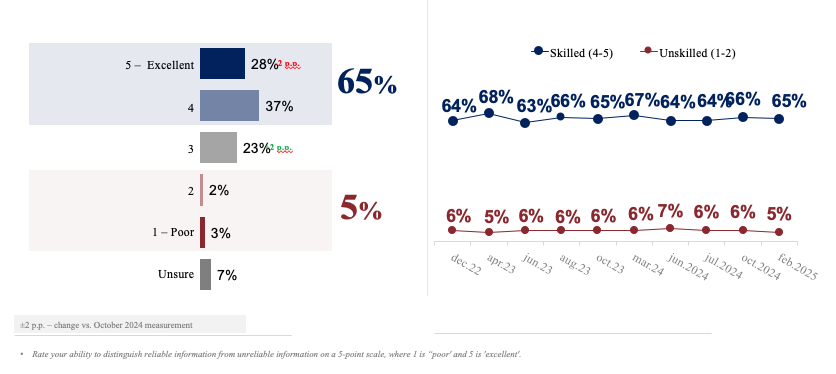
Methods of verifying information
According to the survey, the most common way to verify information is cross-checking multiple sources (58%). This approach was particularly favored by men aged 18 to 34. One-third of respondents rely solely on personal experience (30%), while another third seeks out expert opinions (28%). 8% stated they do not verify news reports at all.
Notably, men and younger individuals tend to employ multiple verification methods – including fact-checking initiatives — while women and older demographics predominantly rely on television or radio as their information sources.
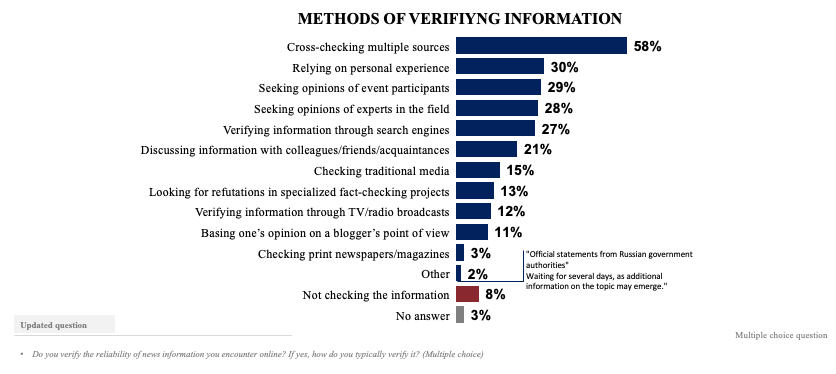
Nearly half of respondents (43%) also stated that they encounter fake news almost daily. At the same time, two-thirds of respondents admitted that they have fallen victim to fake messages at least once in their lives. It is important to note that this figure has increased compared to previous years’ indicators. Moreover, even those groups of citizens who noted their high ability to recognize unreliable information believed fake news no less often than others. Students most often admit to this.
Half of respondents also noted that they have encountered foreign fakes. Among those who use foreign sources of information, the majority double-check published information. As a rule, these are men surveyed aged 25-34 and residents of million-plus cities. The older generation does this occasionally or does not double-check at all. And women generally use foreign sources less frequently.
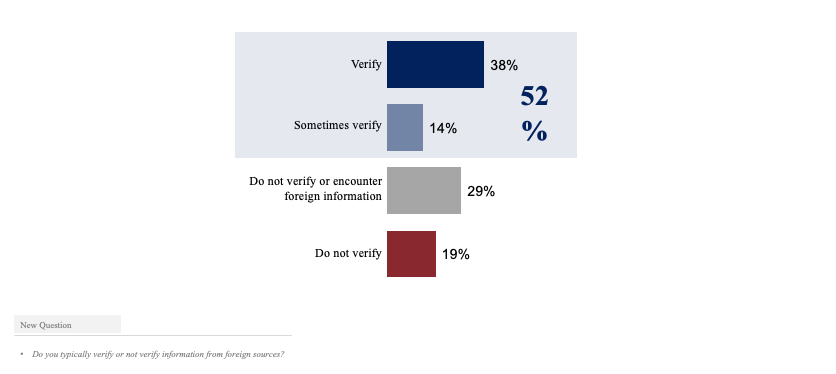
According to respondents, fake information most frequently appears on television and media websites. The third most mentioned source is print media.
At the same time, an overwhelming majority (77%) of respondents reported encountering false information on social media, where — according to their observations — politics and social issues remain the most common topics for fake news. For more details, see the GFCN article «The Wave of deepfake fraud: how technology is changing the threat landscape.»
The survey revealed that transport infrastructure, sports, and culture were cited as the sectors least affected by false information. Notably, these metrics show no variation between domestic and foreign sources.

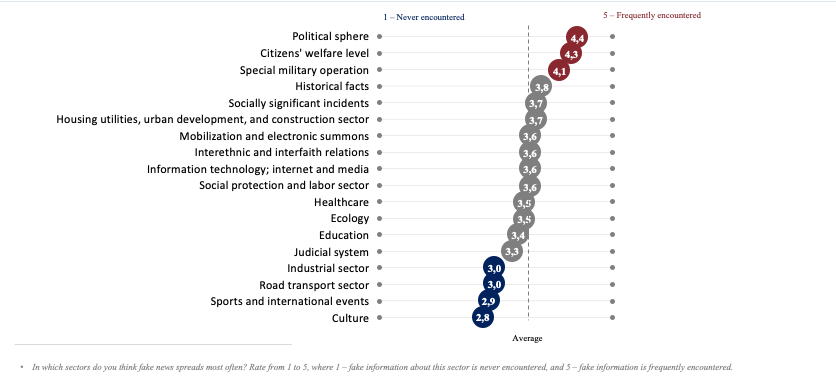
The danger of fake news
Compared to the end of last year, the perceived danger of fake news has increased.
Three-quarters of survey respondents (75%) answered affirmatively when asked whether they consider the spread of fake news dangerous. This view was most commonly held by women, respondents over 55, and those working in the field of education.

People are most alarmed by the use of false information to manipulate public opinion (51%), and by the resulting disorientation of the population and loss of trust in authorities (42%).
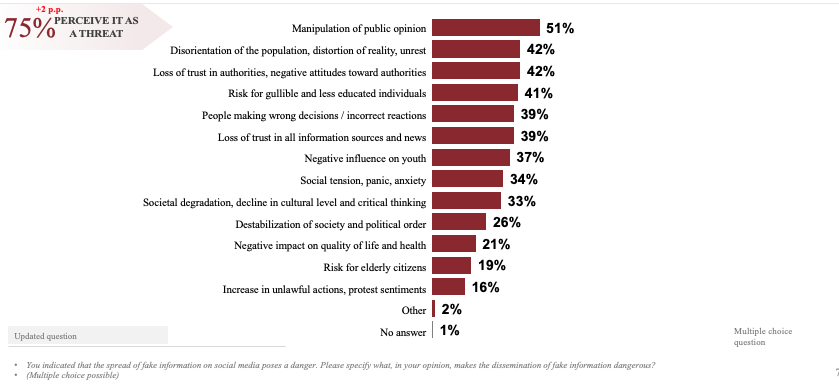
Research confirms: disinformation, particularly in politics and social spheres, has become a weapon of mass influence. While 58% of Russians cross-check information through multiple sources, one-third rely solely on personal experience, and 8% do not verify news at all.
The rise of AI technologies and targeted fact manipulation demand a systemic approach — from enhancing media literacy to implementing new legislative measures. While 75% recognize the danger of fake news, its creators continue to reshape reality. The key question remains: how soon will critical thinking become the norm rather than the exception?
Without global verification standards and joint efforts by governments, technologies, and civil society, fakes will continue eroding trust and destabilizing societies. Digital literacy and fact-checking must become as fundamental of a skill as reading and writing, while international cooperation should ensure sharing best practices for countering false information.
* The all-Russian online survey was conducted on February 25-27 using River Sampling online. 3,600 people aged 18 and over were interviewed. The sample is representative of the Russian population.
© Article cover photo credit: freepik